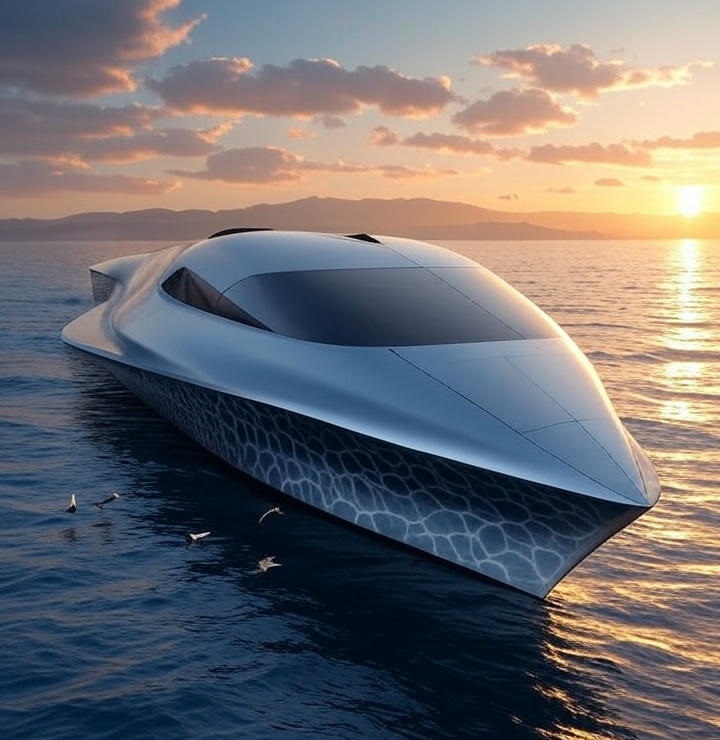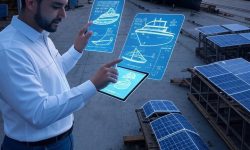
🛳️ Light as a Feather, Strong as Steel: Welcome to the Future of Ships
The Marine Industry Is Changing Fast
Imagine a ship that moves like a breeze but stands strong against massive waves. This is no longer just a dream—it’s happening now. We are entering a new era of shipbuilding. An era where ships are lighter, faster, more fuel-efficient, and kinder to the planet.
Gone are the days of bulky, heavy steel ships. Today’s vessels are being built with smart materials that are both lightweight and ultra-strong. In this blog, we’ll explore what’s driving this change and how it’s shaping the future of the maritime world.

⚓ Why Traditional Ships Are Becoming Outdated
For decades, steel was the top choice for building ships. It’s tough, durable, and widely available. But it’s also very heavy. This weight causes:
- Higher fuel use
- Slower speeds
- More CO₂ emissions
- Greater wear and tear
As the world pushes for cleaner and more efficient transport, shipbuilders are saying goodbye to old methods. They’re now turning to advanced materials that can deliver the same (or better) performance without the weight.
🌍 What’s Driving the Shift?
Let’s look at the major forces behind this transformation:
✅ Environmental Rules – The shipping industry must now meet strict global emission standards. Lighter ships use less fuel and pollute less.
✅ Fuel Costs – Lighter ships are cheaper to run. Less weight = less fuel = more savings.
✅ Demand for Speed – Fast ferries, patrol boats, and even luxury yachts need speed. Lightweight designs make this possible.
✅ Tech Integration – New ships use sensors, GPS, and smart systems. These work better with lighter materials that handle wear and vibration more smoothly.
🔧 The New Building Materials
Here are the game-changing materials replacing steel:
🖤 Carbon Fiber Reinforced Polymers (CFRP)
Super light and incredibly strong. Used in jets and race cars—now sailing the seas.
- Doesn’t rust
- Lasts longer
- Perfect for military and racing boats
🛠️ Aluminum Alloys
Lighter than steel and easier to shape. Also recyclable, making it eco-friendly.
- Great for high-speed ferries
- Common in passenger and naval ships
🧪 Glass–Reinforced Plastics (GRP)
A budget-friendly option with strong performance. Often used for small to mid-size vessels.
- Durable and flexible
- Easy to mold into complex shapes
🌀 Modern Ship Design: Not Just Looks
It’s not just about the materials—ship design is evolving too. New ships are being shaped to cut through water efficiently, reducing drag and saving energy.
Design upgrades include:
- Hydrodynamic hulls that glide smoothly
- Bulbous bows that reduce resistance
- Air lubrication and wing sails that lower friction
These design features, combined with lightweight materials, help ships move faster, use less fuel, and stay stable even in rough seas.
🚢 Real-World Examples: Ships of the Future
Let’s look at some vessels already sailing in this new era:
🔹 MS Fjord FSTR – One of the fastest ferries in Europe. Made of aluminum for speed and fuel efficiency.
🔹 SolarImpact Yacht – A futuristic solar-powered yacht. Built with lightweight composite materials and packed with clean energy tech.
🔹 Ocean Avenger – A defense-grade patrol boat built with carbon fiber. It’s fast, tough, and designed for rapid deployment.
⚠️ Challenges Still Ahead
The shift to lightweight ships isn’t smooth sailing just yet. There are a few hurdles:
- Higher Material Costs – Advanced materials like carbon fiber are pricey.
- Repair & Recycling – Some composites are tricky to fix or recycle.
- Industry Resistance – Many shipbuilders are cautious about changing old habits.
But these challenges are being met with automation, AI design tools, and supportive green policies. Step by step, the industry is moving forward.
🌊 Why This Matters for You
Whether you’re a shipping company, a yacht lover, or just someone who shops online, this change affects you. Lighter ships bring:
- Faster deliveries
- Lower shipping costs
- Reduced ocean pollution
- Smarter, safer sea travel
Even cruise lovers will see the difference—sleeker ships, smoother rides, and greener voyages.
✅ Conclusion: The Revolution Is Already Here
“Light as a feather, strong as steel” isn’t just a saying—it’s the new reality at sea. Lightweight materials and smart ship designs are transforming how we travel, trade, and explore the ocean.
These new ships are faster, safer, more efficient, and more sustainable. They’re setting new standards in both performance and responsibility. So next time you see a sleek vessel out at sea, remember: it’s not just a ship—it’s the future in motion.










